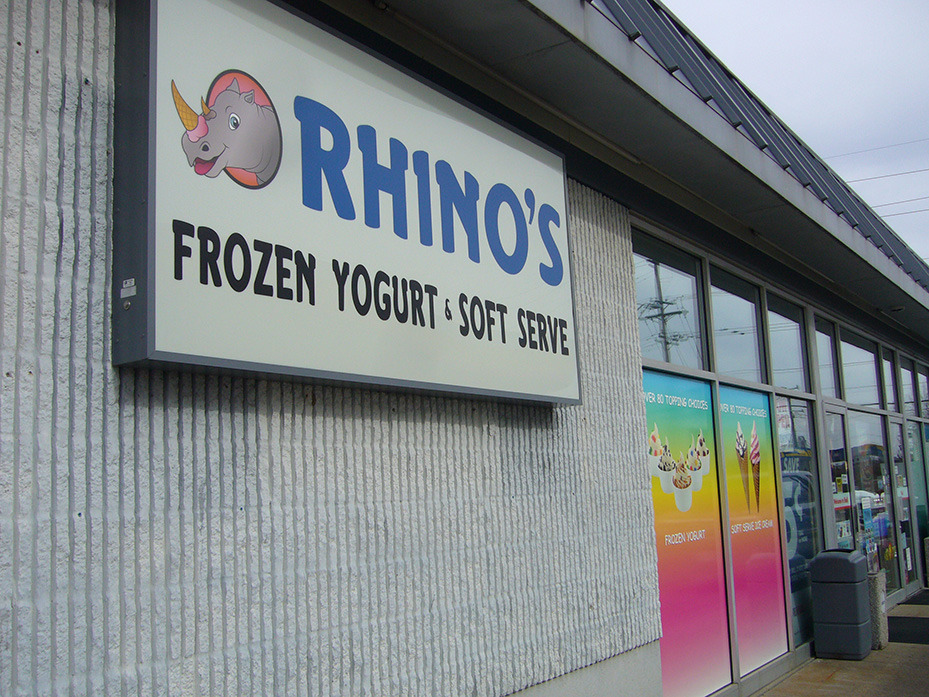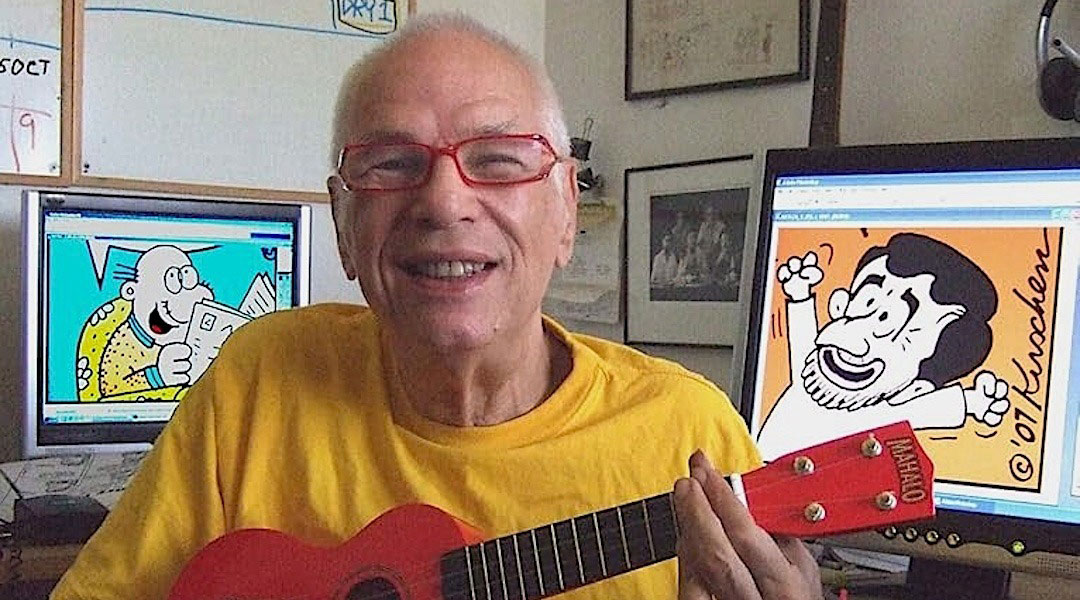
Soft serve ice cream, yogurt, and sorbet are the products of accident, innovation, and ethnic adjustment. The popularity of this cool, creamy, and soft treat regimen was advanced by the Great Depression, according to historians who have looked into the dessert novelty’s past. Here is part of the story that has led, ultimately, to Rhino’s kosher soft serve operation in Blue Ash. Rhino’s likely is unique in these parts, in that its creamy soft serve products are kosher, but soft serve is a worldwide phenomenon otherwise. So, how did it all begin?

A cup of candy-apple sorbet, straight-up
There are several claims of who was first to offer soft serve. Tom Carvel is one of the claimants, and most likely the first to actually market the product. In 1934, he was transporting a stock of retail packaged ice cream when one of his truck tires came up flat. This occurred in Hartsdale, New York on hot day in May. Unable to continue on his way, the ice cream began to melt, and rather than incur a total loss, Carvel was able to sell most of his stock to local residents at a reduced price. Many of those who bought the melting ice cream ate it on the spot and remarked about the enjoyable “soft texture” of his product.

A cup of salted caramel topped with miniature Reese’s cups™, cherries and Butterfinger™ crunch
The experience got Carvel thinking that he might be onto something here, believing that ice cream served in a soft form could be a new dessert craze. He began experimenting and developed a special machine to create soft serve ice cream consistently. He met with success in selling his new product, and eventually founded the Carvel brand of soft ice cream in 1947. So, an accident of sorts led to a niche idea that led to innovation.
One of Carvel’s discoveries was that to achieve his soft serve product required less milk fat than ice cream, and more air blended into the product. That made for lower ingredient cost that resulted in a lower product cost. In those depression years, a lower-cost dessert appealed to many consumers who found regular ice cream too rich for their budgets.
Another claimant is John Fremont McCullough. He and son, Alex, began experimenting with soft serve in 1938. Trying this and that, they offered free samples at events, and people loved what they were trying. Following these “taste trials,” in June of 1940, they opened a store in Joliet, Illinois, to sell the soft ice cream. They called their place Dairy Queen. Today, there are some 6,400 locations in nearly 30 countries worldwide, but most here in the US of A. While Carvel probably is the driving force behind figuring out how to make soft serve, McCullough is the one with the perspicacity to see the worldwide potential of soft serve ice cream, and to capitalize on that potential.

A shot of some of the add-in trays
Predating both Carvel and McCullough is Charles Taylor, who patented a machine in 1926 that made ice cream automatically, and the product it produced was softer than regular ice cream. His company became a leading producer of soft-serve machines going forward.
Today, the product often takes on the vibes of the country where it is produced. For instance, in Japan, there is a green tea version of soft serve ice cream. India, Sri Lanka, and Southeast Asia generally has kulfi, a version taking on flavors such as rose, pistachio, mango, and saffron. And Italy has combined the whimsy of gelato with the texture appeal of soft serve in its Italian version.
Here in River City, and especially for Jewish patrons who want their treats to be kosher, there is one choice that is heads above all others. That’s Rhino’s Frozen Yogurt & Soft Serve. This is my time of year for a stop at the Shell gas station at the corner of Pfeiffer and Kenwood Roads, where Rhino’s resides inside the station’s convenience store. My time of year because August in Greater Cincy can be hot as blue blazes, and there is nothing that cools me off faster than a cup of cherry sorbet (or orange or candy apple or any other sorbet flavor). Owner Bill Miller says that sorbet is the coldest thing on the planet. Hyperbole, yes, but he’s close to right on the mark. Sorbet is a freezing-cold treat, and for me, there is nothing like it on a hot day, though watermelon is a close second.
For the kids, they seem to gravitate toward the ice cream soft serve items, and especially the twisty helix swirl versions which combine two flavors in one cup or cone. Part of the fun of going to Rhino’s is watching the kids go through their choosing routines. Most kids are given limits as to flavors and add-ins they can have. Watching them trying to decide is almost as good as the sorbet. Almost.
See you at Rhino’s Frozen Yogurt & Soft Serve!





